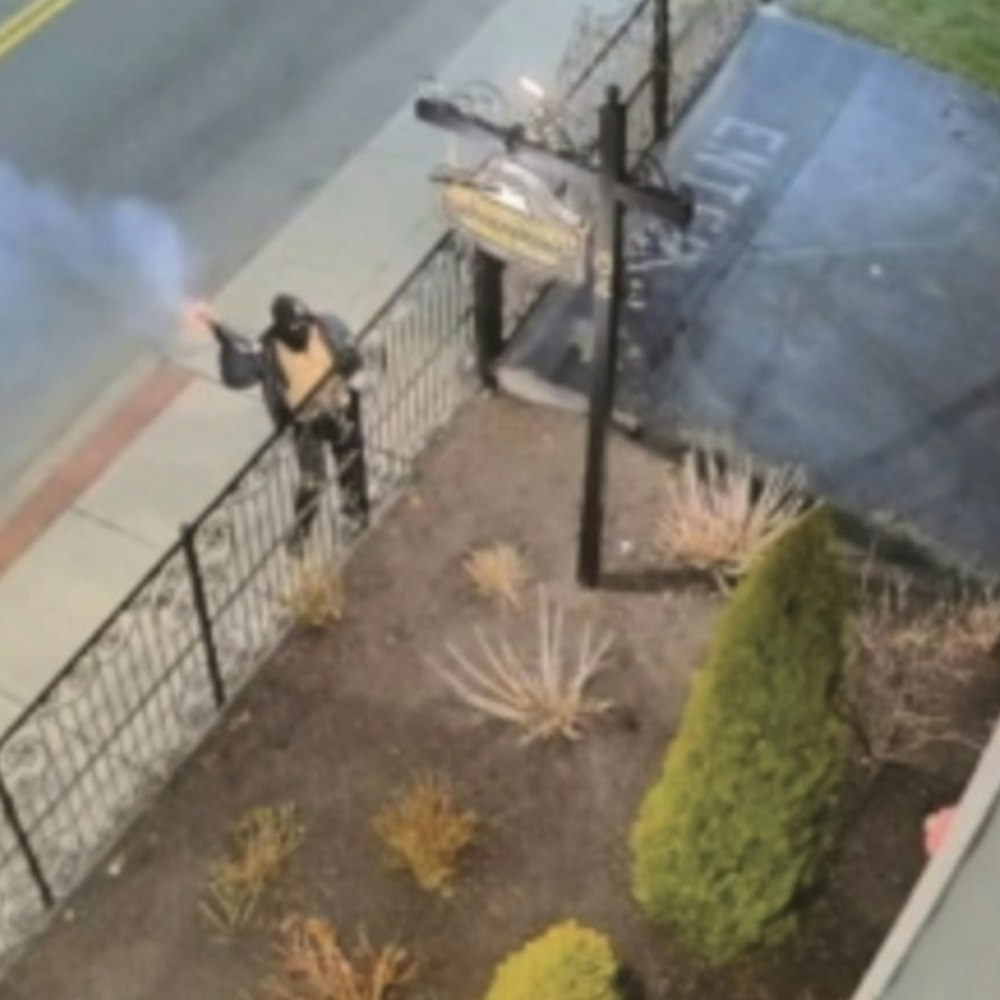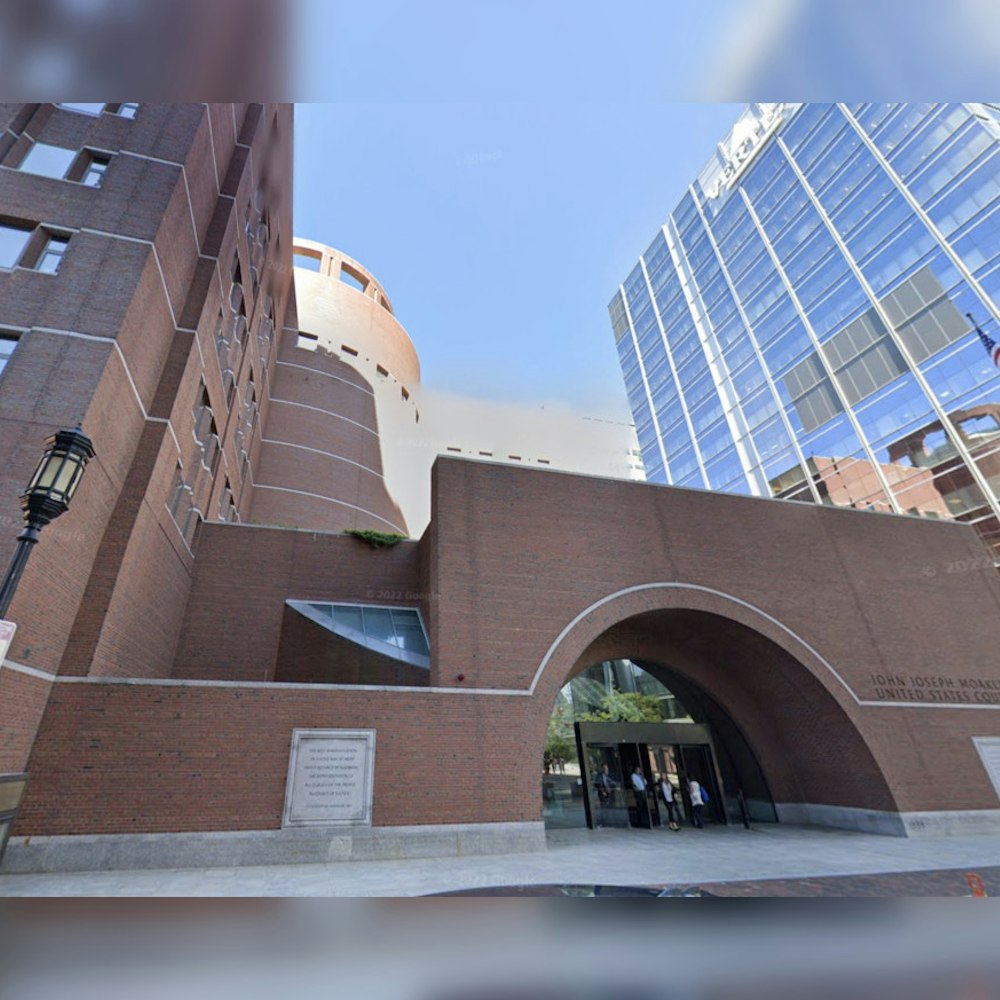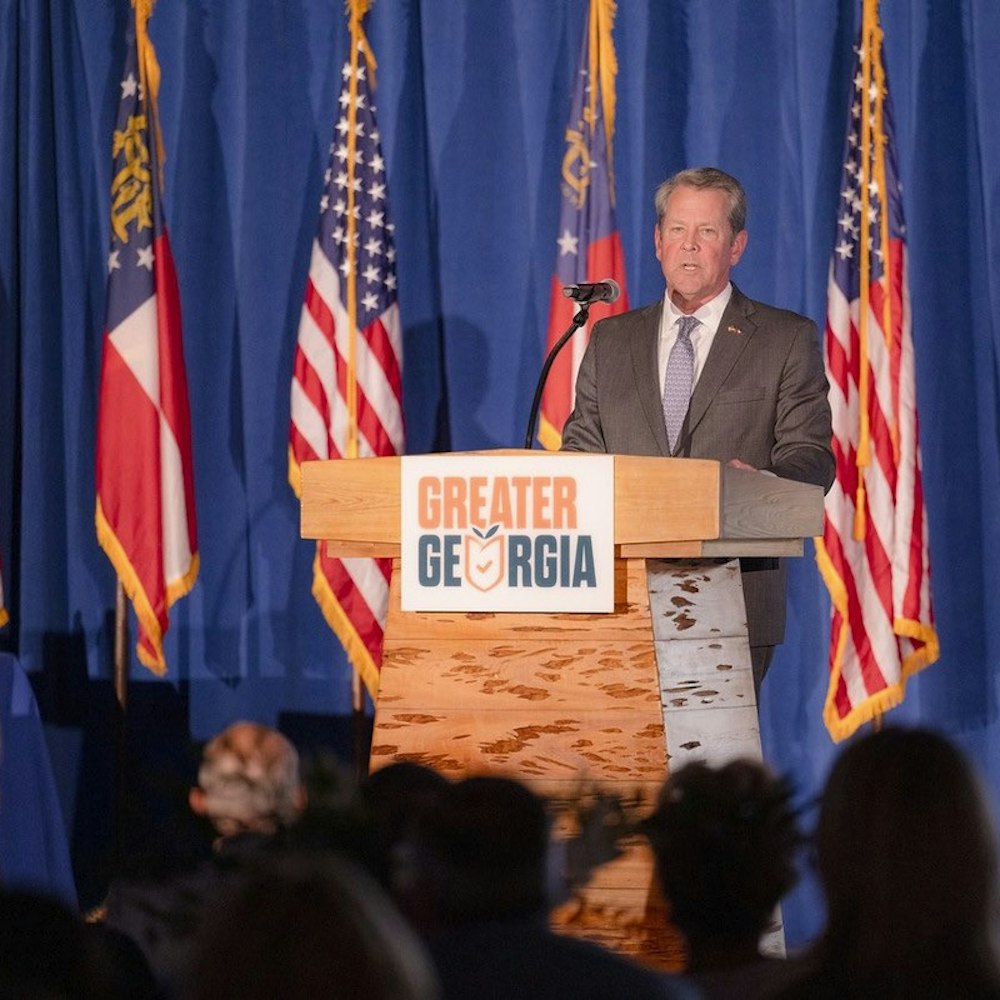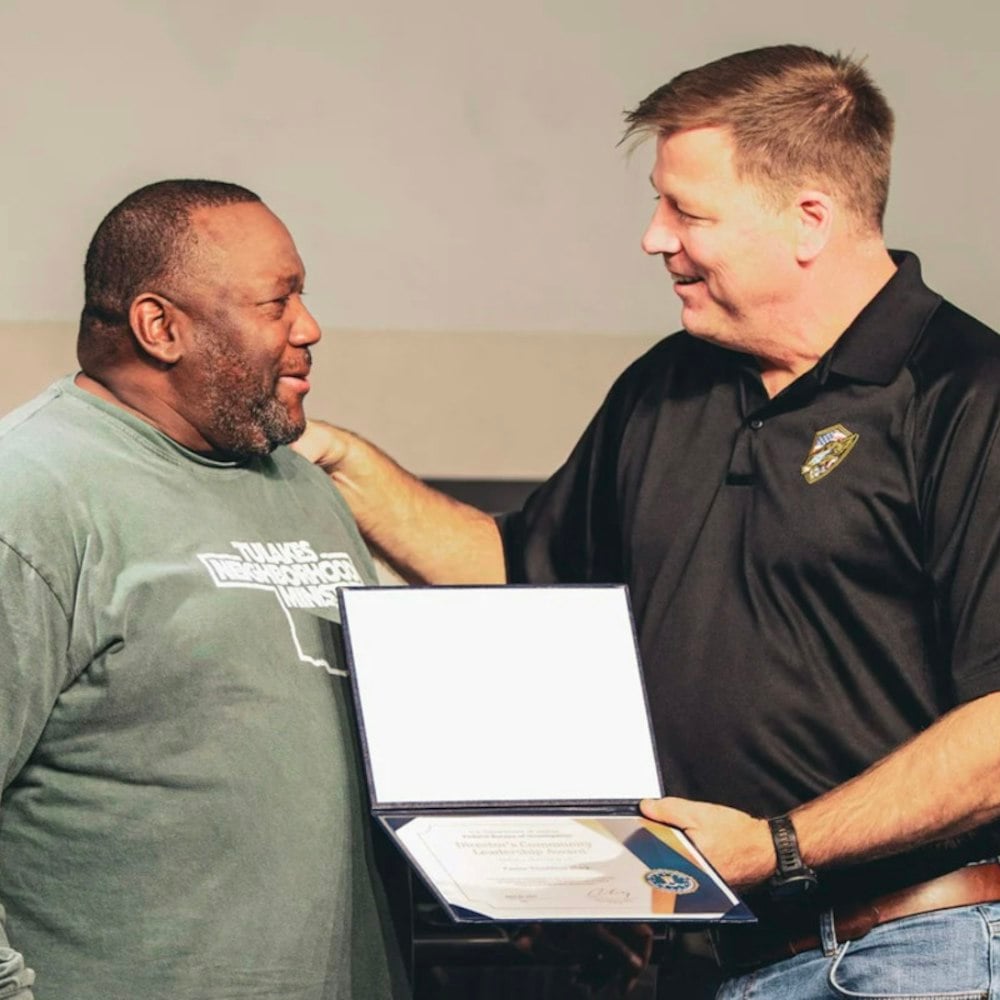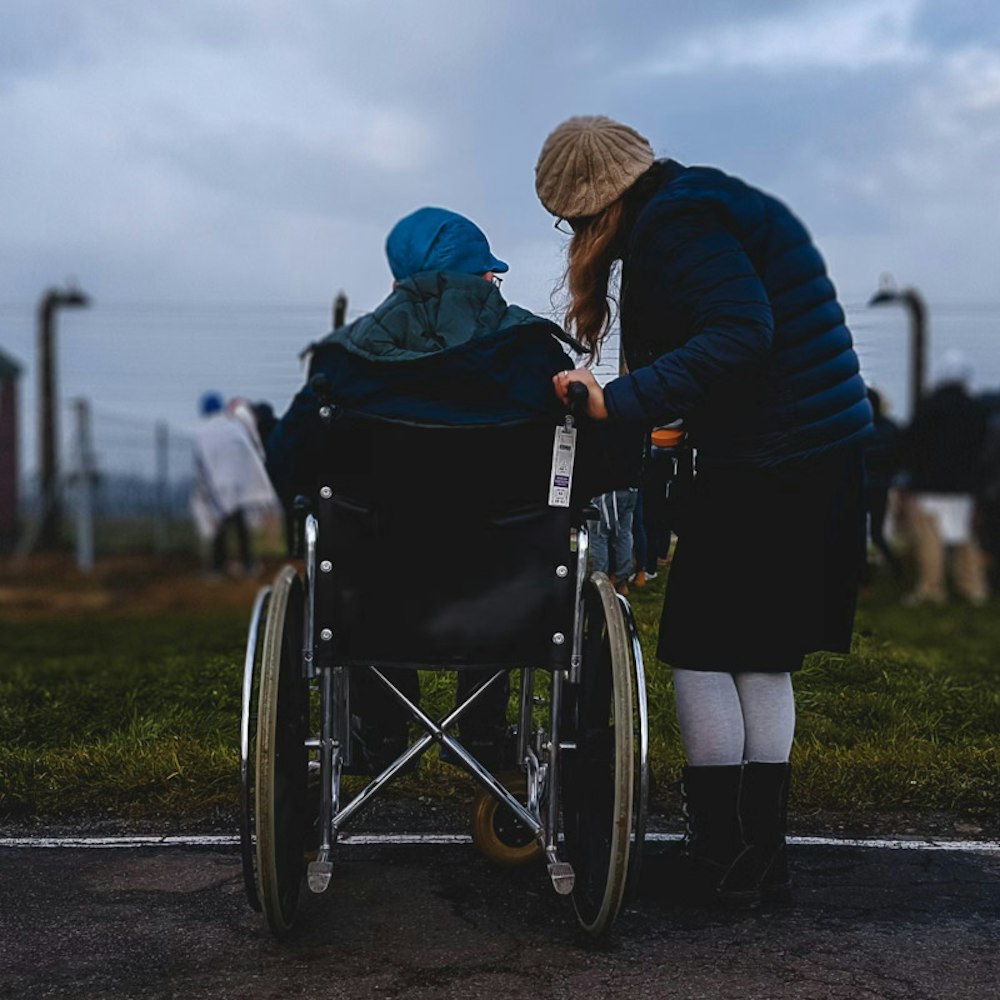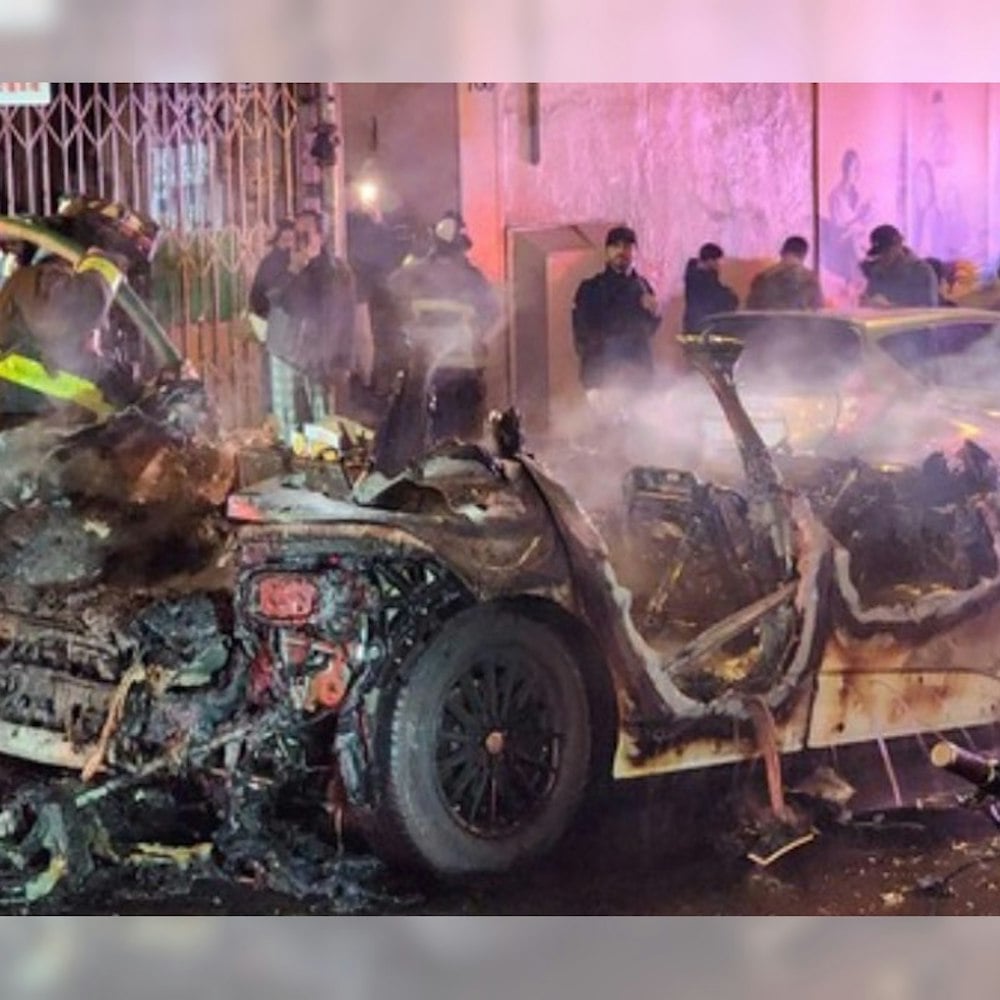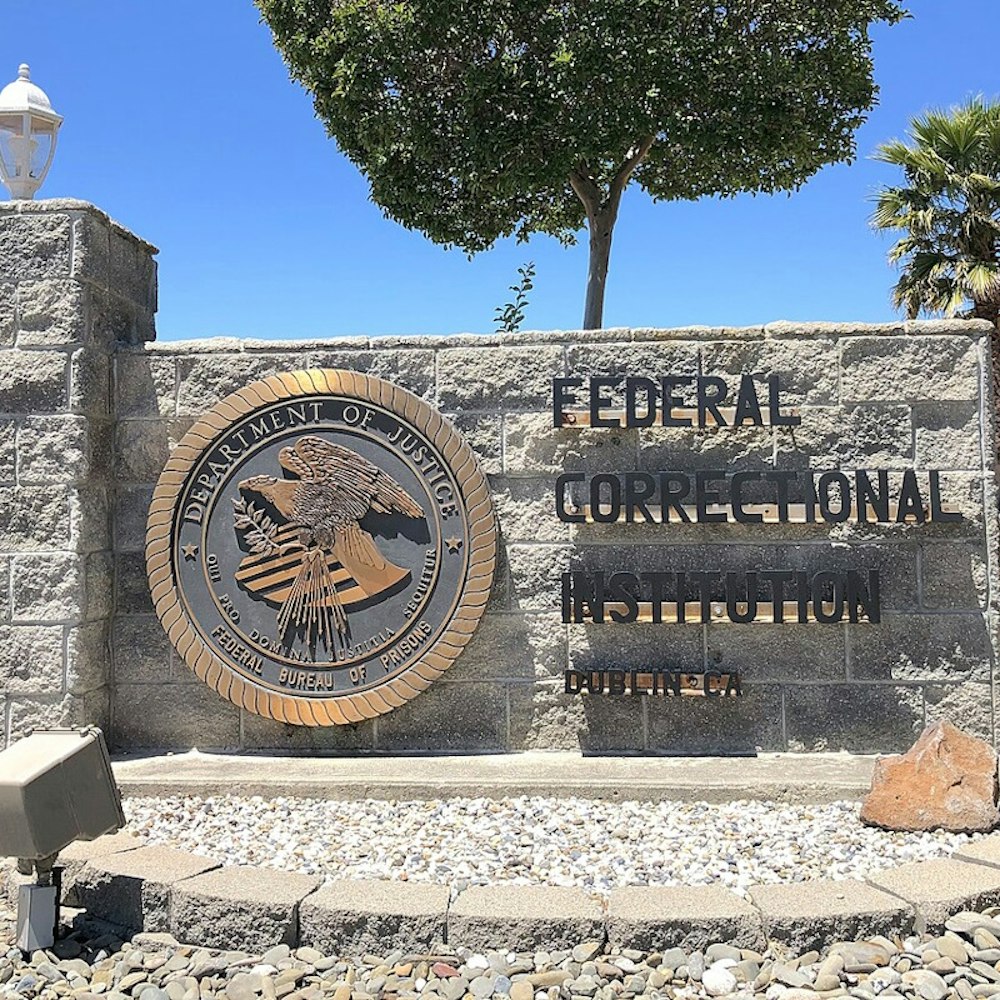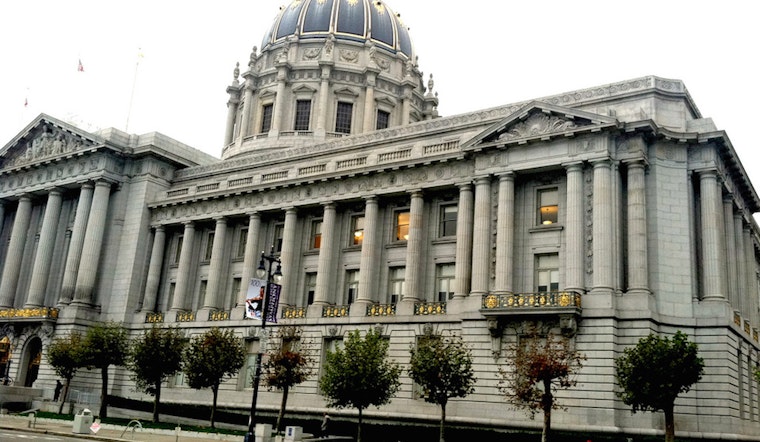
Next Monday, October 6th, is the start of early voting at City Hall for the November 4th California General Election. There are a number of important state and local issues on the ballot, including important state and local seats up for election.
A few weeks ago, we asked Hoodline readers to come up with a few questions for the candidates for District 8's Board of Supervisors position. We collected your questions and sent them off to all of the candidates last week, whittled them down and threw in a couple of our own. Each candidate had a week to formulate a response and get back to us.
Before we get to the answers, here are the questions we distilled from reader comments:
- San Francisco is perceived as the heart of technology and innovation throughout the world, yet its own citizens' access to high speed Internet is limited. The SF Gate reported last year that the US lags behind South Korea, Latvia, Belgium and other countries in providing cheap, fast Internet access to its citizens. With FCC chairman Tom Wheeler moving to expand municipalities' ability to create their own Internet Service Providers, what will you do moving forward to help bring more competition and higher speed Internet access to San Francisco?
- District 8 residents are especially concerned about the homeless and aggressive panhandlers that have increased in numbers throughout the District’s neighborhoods and main streets. What will you do moving forward to help solve the increased homelessness in District 8 and to police aggressive panhandling?
- District 8 has a higher than city-average retail vacancy rate. What steps will you take to fill the retail vacancies moving forward?
- With the city facing a housing crunch that is causing a record number of evictions and pushing low income and even middle class citizens out of the city, what specific steps will you take moving forward to provide for housing availability that is affordable for these demographics?
- An effective and reliable Muni system is important to District 8 residents. The SFMTA recently approved the purchase of new Muni trains, yet a limited amount of the purchased trains will not arrive until 2017. What will you do to prioritize funding for repair and maintenance of the current trains and for the Muni transit system as a whole? How often do you ride Muni every week?
- How you will prioritize the needs of the thousands of District 8 residents that bike in the District and throughout the city? What about the promised expansion of the Bay Area Bike Share program?
- Jane Warner Plaza is a community space that many residents believe lacks proper activation and programming and has become a spot for aggressive panhandlers to congregate and intimidate residents. People do not feel welcome to use the area and feel the area is wasted space. What will you do to improve Jane Warner Plaza?
- What is your plan to enhance public safety, when—regardless of the actual crime numbers—there have been so many high-profile violent and nonviolent crimes reported?
- What do you see as the biggest issue that the LGBT community in San Francisco currently faces, and how do you plan to address it?
- If you had to choose, what do you think was the single most important event in United States history and why?
- If you had to choose, what do you think was the single most important event in San Francisco history and why?
- Why do you want to be District 8 Supervisor?
- What is your vision for District 8?
- What is your vision for San Francisco?
Now, on the candidate's responses. We'll start off in alphabetical order by last name:
Tommy Wayne Basso
Candidate never responded to emails.
George Davis
- I am conceptually all in favor of higher speed Internet access. I don't have staff to study the issue. I would seek and appreciate public input at the appropriate time.
- The cure for homelessness is providing homes and then treatment for alienation and homeless self-medication with drugs and alcohol afterward. This is the policy in New York City, and even San Francisco in the 1960s and 1970s. There is also a successful similar program in Salt Lake City reported in last week's New Yorker magazine ... The City of San Francisco is already spending $166 million dollars on homelessness (SF Chronicle figure, other estimates are higher). I would provide temporary housing immediately for the homeless. FEMA trailers, rehabilitated shipping containers, simple wood frame constructs and put them on unused City and Port land, parking spaces, and vacant lots. Once the homeless have stabilized lives, they can receive social help ... After the 1906 Earthquake, temporary homes were built and placed in City parks almost immediately. Burning Man builds a City, arguably more interesting than San Francisco, in the desert of 70,000 people in less than two weeks.
- I have not studied the issue. I have always been in favor of art installations in the windows of vacant storefronts. If the problem is City bureaucratic delays in letting small business people to open, I'm totally in favor of streamlining the process.
- I have the endorsement of the San Francisco Tenants Union. I would extend rent control to buildings built past 1979, and pass more anti-speculation legislation. I would provide housing subsidies for emergency police, fire, and medical responders to live in the City. I would lobby to build up the Federal HUD to expand Section 8 programs and building of low income housing. I would look to alternative housing solutions like building backyard dwellings and micro-housing spaces.
- I do not own a car. My major transport is walking, Muni, BART, and some bicycling. Right now, I am just a civilian and have not studied the issue and don't have the staff to do so.
- I have not studied the issue. I do sometimes ride in Critical Mass and the World Naked Bike Ride. I am sympathetic to bicycle transit.
- Ironically, the punkish "Street People" moved in after the nudity ban removed the friendlier, more entertaining nudists. I'd overturn the nudity ban.
- I have not studied the issue. When appropriate, I would like more public comment and suggestions on this issue.
- Assimilation into the American Mainstream. I welcome the trend.
- Declaration of Independence 1776 and incorporation of the Age of Enlightenment ideas.
- Jasper O'Farrell laying out the current street grid including the creation of Market Street.
- I am a Civil Liberties activist with the ACLU and Amnesty International. I am for the removal of an incumbent that takes away people's civil liberties and voting rights and is a threat to the economic security of the people who live here. He sponsored a nudity ban. Think if you wanted to convert to being a Muslim or a Catholic tomorrow, forget that you don't want to, and you found out that Scott Wiener made it illegal for you to do so. How would you feel? Scott Wiener was put into office in 2010 by participating in a $200,000 gift from rabid anti-rent control Southern California real estate magnate Thomas Coates. He has consistently voted against the interest of the district's 60% renters and those sympathetic to tenants' rights. Scott Wiener represents the 1%, is dangerous, and needs to be removed immediately.
- Fun, happiness, and prosperity.
- Fun, happiness, and prosperity. Greater intellectual freedom and civil liberties.
John Nulty
- San Francisco has been highly innovative in expanding fiber to public housing, aggressively leasing dark fiber to community anchor institutions such as libraries and schools, and ensuring free public Wi-Fi, but has not yet cracked the nut of alternative community residential or business fiber access.
- Fortunately, most folks who ask strangers for money on the street—whether they're elderly or vagrants down on their luck, or clueless college students who didn't pack enough money for subway fare—will take a simple "no" for an answer and move on to their next prospect. However, every once in a while, you may run into a panhandler who escalates a semi-innocent request for money into a tense confrontation. Community planning with local merchants and police and other entities to resolve why the District has more panhandler.
- First examine the reasons why the district has higher retail vacancy rate. Then hold meetings then hearing(s) to resolve it. Second, District 8 should convert some retail space to residential uses.
- First this large percentage would be renters so I would change the rent controls to include all properties from 1979 to current be covered. Then examine other current and new programs for current housing stock in San Francisco.
- Have hearing on MTA's budget hear all sides then work on changing the funding to give priority on the current fleet. But also look at transit system improvements in District 8. I ride Muni daily.
- Continue to roll out bike routes in the district. Work with Bay Area Air Quality Management District to resolve the expansion of the Bay Area Bike program.
- Continue to meet with the entities involved with open space and seek funding/fundraising for programming the community would enjoy.
- Start to use smart police tools with public and private entities to enhance the safety within District 8.
- LGBT civil rights as they change need to deal with the impacts the community faces.
- American Revolutionary War (1775-1783) The Birth of New Nation United States.
- Panama-Pacific International Exposition 1915. World fair that showcased San Francisco's recovery from 1906 earthquake.
- I am running for District 8 Supervisor to continue my work of three decades improving San Francisco's future. As a community activist I have spent many years of public service working to find ways to improve cause after cause affecting San Franciscans. Also have been involved in building consensus amongst various stakeholders over the years and I wish to bring my experience to City Hall and represent my constituents in District 8.
- District 8 is the center of San Francisco. We have to adapt to changes that have not been addressed by our elected officials. I wish to bring new leadership for future so the district is great place to live/work/and visit in city.
- Continue to make our Great City a major hub for International culture continuing into 22nd Century.
Michael Petrelis
Candidate offered to review questions, but declined to participate at deadline.
Scott Wiener (Incumbent)
- San Francisco is falling behind in terms of our technology infrastructure. We've missed opportunities, but it's not too late for us to catch up. I'm supporting several efforts to do so. First, as we tear up pretty much every street in San Francisco, we should be laying publicly accessible fiber in order to spur competition and high-speed Internet access. I'm currently co-sponsoring legislation with my colleague, Supervisor David Chiu, to mandate that when a street is being opened for road work or utility work, fiber be laid before the street is closed. It shouldn't take a statutory mandate for this to happen—our departments should have been doing this all along—but if legislation is what it takes, then so be it. Second, I'm pushing for our Department of Technology to make the city's extensive dark fiber network available to the private sector so that we can expand high speed Internet access. Third, I'm exploring legislation to require that new development include appropriate conduit so that it can easily be connected to faster internet—i.e., fiber to the home.
- Since taking office, I've spent significant time and energy addressing our growing challenges around homelessness and street behavior. Homelessness has been a vexing problem for San Francisco for more than 30 years. There's no easy solution. It's important not to confuse homelessness with bad street behavior. While there is overlap, the two aren't the same, and it's important not to assume that bad street behavior is by homeless people or that all homeless people are causing problems. People who aren't homeless cause problems on our streets, while many homeless people never cause any problems. It's important not to stereotype.
In my view, to address the challenges we experience on our streets, we need to provide strong access to services—housing, job training, mental health and substance abuse services—while also having and enforcing basic standards of behavior. Where San Francisco has fallen short is that we invest aggressively in services while not consistently enforcing laws that are on the books. The result is a large street population, with too many people acting out. Setting up camps on sidewalks isn't okay. Passing out in one's vomit isn't okay. Taking over public space isn't okay. And, harassing people isn't okay.
In my term in office, I've been very supportive of investing in housing and social services for homeless people, and particularly for at-risk youth and seniors. I've also advocated for better accountability for bad street behavior. I authored legislation to put basic rules in place for several plazas in the Castro, and when the benches at Harvey Milk Plaza turned into camping areas with entrenched criminal activity, I supported the benches' removal. I've advocated for better police presence in our neighborhoods to address street crime and quality of life issues, and I've been a leading voice to improve police staffing.
More recently, given the increasingly challenging situation throughout Upper Market, and particularly around the Market Street Safeway, I've been in constant contact with the three police captains responsible for portions of the neighborhood, with Safeway, and with various neighborhood groups, to ensure that we are methodically dealing with the challenges. I also obtained $200,000 in the recently adopted budget to support a two-year pilot program called "Castro Cares," which will add dedicated law enforcement and social work resources to address our challenges in the neighborhood.
I'll continue to work for a more civil street environment in San Francisco—one that welcomes everyone but that doesn't allow anyone to monopolize our public space. - The Upper Market and Castro commercial districts, together, are one of the largest commercial areas in the city. There's an enormous amount of retail space, and there will always be some vacancies. Since taking office, I've helped various new businesses open and navigate our Byzantine planning process. I encourage prospective business owners to work closely with my office to ensure that they understand the process and that the process is timely for them. While we have more vacancies than any of us want, it's also important to look at the positive. In the past four years more than 70 new businesses have opened in the neighborhood. Others are coming in, but it takes time for people to finalize leases, get through the planning process, and do build-outs. I'll continue to be proactive and hands on to help businesses that want to come in to the neighborhood.
- I've focused extensively on our housing affordability crisis. For decades, we've built very little housing and have adopted many anti-housing policies. When our population wasn't growing, our failure to create much housing wasn't a big problem. But, we are now growing and the chickens are coming home to roost. Since 2003, our population has grown by about 85,000 people; during that same period, we added 20,000 units of housing. Even in 2013—with all the cranes dotting the sky—we continued to fall behind by adding 2,400 housing units as we grew by 10,000 people. Whatever happens with the current economic expansion, our long term trajectory isn't going to change. For example, we are projected to grow by another 150,000 people by 2040.
Cities are growing, and San Francisco is no exception. Our choice isn't whether growth will happen, but rather whether to prepare for it. I believe we must prepare.
Failing to create housing as population grows is a recipe for exploding housing prices. While some say supply and demand doesn't apply to housing in San Francisco, it most certainly does, and the past decade has shown that to be the case with the significant rise in rents and home prices. When we don't build housing and prices rise, the people who suffer the most are low income and working class people, who are priced out of the city, evicted, or otherwise displaced.
I've focused on addressing our housing crisis in two ways. I've continued my long support of rent control and have supported and sponsored various measures—including Ellis Act reform, legalizing in-law units, and stopping the conversion of apartments to student dorms—to keep people stable in their housing.
Yet, as important as reducing displacement is, it's not enough by itself. At the same time we reduce displacement, we must address the city's structural housing shortage. I've worked hard to do so. I authored successful legislation to allow for new in-law units in the Castro and am currently authoring legislation to allow people to add in-law units when they perform seismic retrofits of their buildings; to incentivize developers to build affordable units as part of their developments and build more than the minimum required; to allow for smaller studios; and to improve the housing approval process. My in-law unit legislation, for the first time, will allow for the creation of new rent-controlled units. I've also championed funding for affordable housing in our neighborhoods.
San Francisco's housing crisis threatens the future diversity and openness of our city. There's no easy or quick solution. Solving it will take years of perseverance and creative thinking. I'll continue to focus on finding ways to keep current residents stable in their housing while making sure future residents can make lives for themselves here. - I ride Muni every day and have for the past 17 years. Muni is my primary way of getting around town. I've been the leading advocate at City Hall for improved public transportation investment, which is why Streetsblog recognized me as the "Most Active Transportation Reformer." Muni has many challenges, but the most significant is long-term under-investment in the system. Muni has accumulated $2.2 billion in deferred maintenance, it doesn't have enough vehicles, and the vehicles it has are old and prone to breakdowns. The light rail system, in particular, is a major problem and the number one source of lack of reliability in the system. Muni didn't order enough LRVs to begin with, it made a poor choice in going with Breda since the vehicles are defective, and for a number of years, Muni wasn't investing sufficiently in maintenance and vehicle rehabilitation. As a result, we are experiencing significant vehicle over-crowding and vehicle shortages.
Since taking office, I've fought hard to reverse this downward spiral. I've advocated to ensure that development pays for transit impacts. For example, I sponsored legislation to close the huge loopholes that exist in our transit impact development fee. I also led the charge to oppose efforts by developers in the future Transbay District to reduce what they have to contribute to the funding of the Transbay Transit Center and the downtown train extension. I authored Prop B, which will tie transit funding to population growth, with 75% of the funds dedicated exclusively to improving Muni's reliability, capacity, frequency of service, and state of good repair. I represent San Francisco on the regional Metropolitan Transportation Commission (MTC) and, in that role, have successfully advocated for significantly increased transit funding for San Francisco. I've authored several pieces of legislation to purchase new Muni buses and co-sponsored the recent contract approval for the next generation of LRVs.
Until the new Siemens LRVs arrive—and we can accelerate that arrival if we have the political will to invest in an acceleration (which Prop B will help us do)çwe must make the most of the limited LRV stock we have. I recently called for an oversight hearing to discuss just this issue—bridging the gap between now and arrival of the new vehicles. The reason we have so many one-car trains in the system, and have now eliminated the three-car train implemented earlier this year, is because we have so few LRVs that when one breaks down or has an accident, there typically isn't a vehicle to replace it. We need to maximize the number of LRVs in service by continuing to improve routine maintenance, aggressively continuing the agency's recently re-started mid-life rehabilitation process, and resolving the operator shortage that Muni created by creating a training bottleneck. All three of these strategies are in process.
We also need to invest in the less sexy aspects of the Muni system, which Prop A—the Muni bond on the November ballot—will help us to do. I made the motion to amend our capital plan to include this $500 million bond and helped put the bond together. Prop A will fund massive renovations of Muni's maintenance yards, which undermine the system by being so outdated that they can't accommodate all of the vehicles that Muni has. The bond will also fund capital improvements to implement the Transit Effectiveness Project (TEP), which will make Muni run more efficiently and at a faster average speed. And, it will fund transit-only lanes—such as bus rapid transit—to help make Muni more reliable.
I'll continue to fight hard for reform and investment of our neglected system. It's one of the most important things we can do for the future of our growing city. - Since taking office, I've been a staunch advocate of making biking easier, safer, and more accessible in San Francisco. I've been a steady supporter of the build-out of the bike network throughout Upper Market. I've obtained MTA's agreement to increase the amount of bike parking on and around Castro Street. When the bike corral at 18th and Collingwood was in jeopardy, I made the arrangements necessary to allow it to return post-resurfacing of 18th Street. I've been active in improving the availability and safety of biking in other parts of the district as well. For example, my office played a key role in the pilot program on northbound San Jose Avenue to create a buffer between the traffic lanes and the bike lane. And, each year, I obtain funding for District 8 bike improvements.
I've also been supportive of bike sharing and have held several public hearings on its progress or lack thereof. The initial pilot is in place, and we are all eagerly awaiting its extension into the Mission, Castro, and other neighborhoods. We've now identified the locations of the new bike sharing pods, but due to financial turmoil in the industry, we've hit a delay. In the long run, bike sharing will be rolled out throughout San Francisco and the region and will significantly expand the viability of biking for our residents. As a commissioner on the Metropolitan Transportation Commission, I've been supportive of ensuring adequate funding for these expansion efforts. - Please see my response above on homelessness. Jane Warner Plaza was a major step forward for the neighborhood, since the neighborhood didn't previously have a usable public plaza. I support the plaza and want it to succeed, and as part of the Castro sidewalk and streetscape project, we are about to renovate and upgrade the plaza. Jane Warner has challenges. Everyone is welcome in the plaza, including homeless people, but people need to respect the space. Unfortunately, a number of people don't respect the space and thus make the space less usable for other residents. I authored legislation a few years ago to prohibit camping and smoking in the plaza. When we saw a significant uptick in camping and anti-social behavior in the plaza a few years ago, I worked closely with the police to address the problem, and we did so quite effectively. Unfortunately, the problem has grown again. What we've learned is that the only way to address these challenges is with consistent and proactive attention, from the police and from homeless outreach workers. The police have recently stepped up their attention in the plaza, with some positive results. Through the Castro Cares program, for which I obtained funding in the budget, we will have even more consistent law enforcement support, as well as dedicated social work staffing to help get people into services. There's no easy answer to the problems at Jane Warner Plaza, but we know that with a consistent focus, we can improve the situation.
Activating the plaza is also very helpful, and I applaud the work of the Castro/Upper Market Community Benefit District in bringing programming to the space. We need even more programming. Yet, programming will never be the complete solution. You can only have so many successful programs in the plaza, and the most challenging times of day—early morning and in the evening—are not necessarily the best times for programming. Moreover, one of the greatest benefits of the plaza is to provide a space where people can relax, have a cup of coffee, read the paper, chat with friends, and simply enjoy the neighborhood. Too much programing undermines that goal. It's a balance, and we need to be more consistent about ensuring that the plaza is usable by everyone. - We have a significant police staffing shortage, and I've worked hard since taking office to turn that shortage around. For the 6 years before I took office, the city didn't fund any police academy classes. This budget negligence cause the police department to shrink from 2,000 officers to under 1,700 officers. In my first year in office in 2011, as a member of the Budget Committee, I partnered with Supervisors David Chiu and Carmen Chu to fund a police academy class. The year after that important first step, Mayor Lee and the Board agreed to a six-year staffing plan, under which we committed to funding three academy classes a year. We are now several years into that staffing plan, and the department is now, finally, growing. We anticipate that the department will be back up to 2,000 officers by 2018. We need to commit to never allowing this kind of slide to happen again.
The staffing shortage has several impacts. First, it undermines traffic enforcement and beat walking. Second, it makes it challenging for officers to respond promptly to non-emergency public safety issues. As we re-staff the department, we will see more officers on the beat and will be safer as a result. In the interim, I'm working closely with our captains to obtain greater police presence in the neighborhood. Captain Perea of Mission Station has increased the beat on and around Castro Street and has devoted considerable resources toward Jane Warner Plaza. Captain McEachern of Northern Station recently created a new beat focusing on the area around the Safeway going north. Captain Vaswani of Park Station has increased the station's focus on Duboce Park and the surrounding area. Each of these staffing decisions resulted from interactions among the police, myself, and members of the community. This type of collaborative community policing strategy is what will ultimately make our neighborhood safer.
It's also important for residents to be involved in community safety. I co-founded Castro Community on Patrol in 2006, which is a great model for citizen engagement in public safety. I work closely with SF SAFE, which, free of charge, trains neighbors how to form a neighborhood watch.
It's all about partnership, and I will continue to help build those partnerships. - Housing is the LGBT community's greatest challenge in San Francisco. Our housing crisis threatens current residents in terms of evictions and the difficulty of relocating within the city. It also threatens the next generation of LGBT residents, since it is harder and harder for young people to come here, find housing, and make lives for themselves. Please see above for my work around housing.
- The end of slavery. Slavery was an infection that went to the core of our country. Its end was the most important step forward this country has taken. While we still experience significant racism and racial disparity in this country, the fact that we eliminated this despicable institution was critically important to our country's development as a democracy.
- The election of Harvey Milk to the Board of Supervisors and his subsequent murder. Harvey, in life and death, changed San Francisco forever. We are a more progressive city because of him, and the LGBT community, in significant part due to Harvey's work, was strong enough to survive the ensuing HIV/AIDS epidemic. We owe Harvey tremendously for his vision and leadership.
- I’ve had the honor of representing the residents of District 8 at the Board of Supervisors since 2011. I’ve worked very hard since taking office to deliver on my commitment to the voters that I would focus on the key issues facing our city. I’ve worked to address our housing crisis by moving forward measures to stabilize our existing housing while adding to our housing stock in order to accommodate our growing population. For example, I authored legislation to allow people to add new in-law units in the Castro, to incentivize developers to build on-site affordable units and to exceed the minimum affordable unit requirement, to allow smaller studios, and to ban universities from converting rent-controlled apartment buildings into student dorms. I’ve continued my long support of renters by advocating for Ellis Act reform and supporting legislation to increase Ellis Act relocation benefits.
I’ve also worked to improve our transportation challenges by improving investment in our transit system, improving access to car sharing and taxis, and making the city safer and more accessible for cyclists and pedestrians. I represent San Francisco on the regional Metropolitan Transportation Commission and the Golden Gate Bridge, Highway, and Transportation District.
I serve on the Budget Committee and have been instrumental in back-filling 100% of federal HIV cuts, delivering funds for affordable housing and emergency housing needs, investing in our park system and the cleanliness of our public spaces, and funding police academy classes and road resurfacing.
I’ve aggressively advocated for the needs of the LGBT community, including expansion of access to HIV services and addressing the needs of LGBT seniors and young people. I've obtained funding for critical senior services in my district.
I’ve also delivered for District 8. I’ve championed the Castro Street sidewalk widening and streetscape project, having obtained the project’s funding and guided it through the community design process. I’ve helped move forward key park projects, including the renovation of Dolores Park and Glen Canyon. I authored legislation to acquire the site of the Noe Valley Farmers Market, in order to save the site from development and preserve it for transformation into a permanent town square. And, I’ve moved forward pedestrian safety projects in various parts of the district.
It’s been a deep honor to represent District 8 at City Hall, and I look forward to continuing this important work.
- I want District 8 to remain a diverse, vibrant, and forward-looking district. To achieve this goal, we need to address our housing crisis, improve our transportation system, and improve our public spaces. As described in various answers above, I've worked hard for the district in each of these areas.
- My vision for San Francisco is the same as my vision for District 8. Please see above.
If you've made it this far, you should be pretty well informed about the positions of the District 8 candidates who chose to participate in our reader-powered questionnaire. As mentioned, early voting starts at City Hall on Monday, with October 20th the last day to register to vote and Election Day coming right up on November 4th.
If you're curious about the statewide races and propositions, check out the Easy Voters Guide from The League of Women Voters.
Don't forget to vote!


